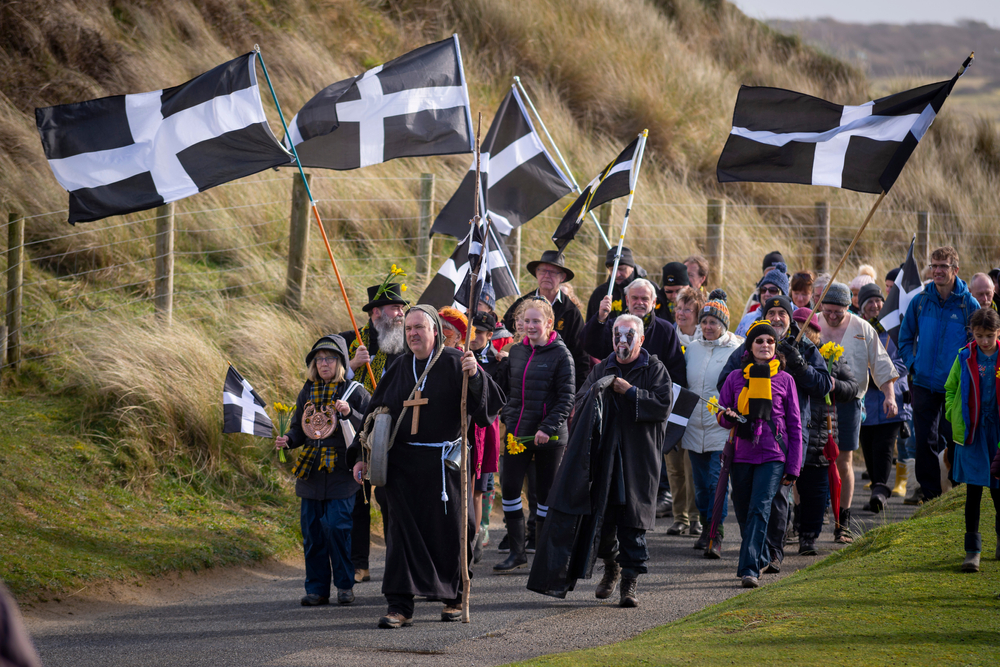Every 5th March the people of Cornwall come together to celebrate their patron saint – Saint Piran. There are parades in many of the towns and close to Perranporth hundreds make a pilgrimage out across the dunes of Penhale Sands, with black and white flags flying, to the ruin of St Piran’s Oratory and the Celtic cross.
But who was the man behind these celebrations? And why does he mean so much to the Cornish?
Saint Piran’s date of birth has been lost to the mists of time but it is said to have been around 1500 years ago in the 4th or 5th century.
Cornwall’s Saint Piran’s miraculous arrival
Like so many Cornish saints Saint Piran’s arrival in Cornwall started with a seemingly miraculous journey when he famously floated here from Ireland on a millstone. However, the millstone in this legend has interpreted as either an altar stone, something that Celtic priests were known to have carried with them, or perhaps ballast from the boat he arrived in or even confusion with a coracle, a circular craft made from animal skins wrapped around a wooden frame. But whatever the case Saint Piran is thought to have landed near Perranporth. This is where he built his first church on Penhale Sands where he began preaching Christianity to the local population. His first converts were said to be a badger, a boar and a fox!
As the years passed his first make-shift church was replaced by a more substantial structure which remained in use until the 10th century when it was lost to the dunes. The remains of this building can still be seen today. However it is now surrounded by a modern protective wall.
The oratory, thought by some to be the oldest place of Christian worship on the British mainland, lay buried beneath the sands for centuries. It was rediscovered in 1789 by a man who stopped to drink from a nearby spring and spotted a wall poking up through a dune. Since then it has been excavated and reburied more than once and was last uncovered in 2015.
Saint Piran myths
As for Saint Piran, he is said to have earned his place in Cornish hearts by showing us how to smelt tin, and this myth is also what gave us the black and white flag of Cornwall. Its colours represent the black ore from which pours the white-hot molten metal.
Piran may have been a powerful preacher who charmed the people of Cornwall into converting to Christianity. But he was also thought to have been a prodigious drinker. Legend has it that the saint died at the age of 206 after drunkenly falling down a well! In medieval times there was a common phrase used to describe someone who had had a few too many, you were said to be “as drunk as a Perraner”.
as drunk as a Perraner
In 2022 St Piran’s Day falls on a Saturday and parades are planned, in amongst other places – Truro, Falmouth, Penzance, Newquay, Redruth and Perranporth. (See local press for details.)
